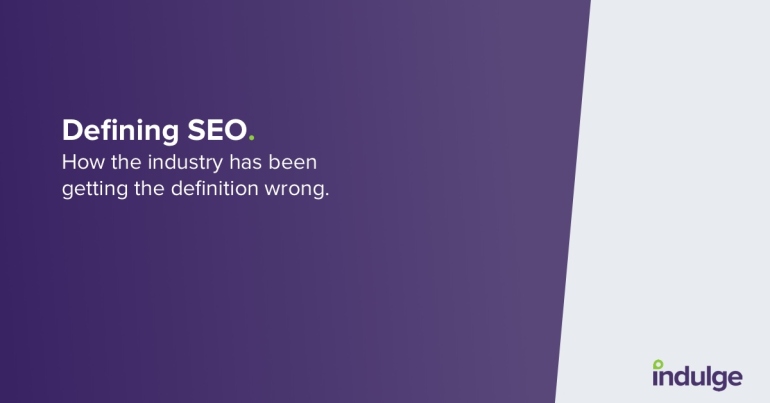One of our clients is what is known as an ‘arms-length’ organisation.
Without going too deep into organisational structures, this essentially means that the organisation is connected to the UK government.
This means that whilst it might not be under the direct control of the government, it does have a public service duty.
The reason I mention this is that as a result of its position in the market, it’s what can be considered a very well-known brand.
When the organisation speaks, the media listens and as a result, it’s very well referenced online.
In pure mucky SEO terms, it has loads of links from big websites. We’re talking BBC, The Guardian and Gov.uk.
Even those with a passing knowledge of SEO probably know that links like this usually mean rankings. There are marketers whose life work it is to land a link on a website of this ilk.
So here comes the interesting bit; our job is to ‘do SEO’ for this client.
The thing is, mostly without trying, this client pretty much cleans up in the search results.
If you carry out a search for anything related to what this client does, there’s a strong chance you’ll see their website, and a lot of the time, it’ll be in a prime spot.
So, how does one ‘do SEO’ for a client like this?
SEO’s biggest misconception
On a mission to correct peoples’ wonky definitions of what SEO is, this morning I searched for ‘what is SEO’ on Google.
Here’s what the top three results had to say.
Search Engine Land (SEL)
“In simple terms, it means the process of improving your site to increase its visibility when people search for products or services related to your business in…search engines”
Moz
“…a set of practices designed to improve the appearance and positioning of web pages in organic search results.”
Neil Patel
“SEO is the process of taking steps to help a website or piece of content rank higher on Google.”
Each of these definitions essentially boils down to the same thing; SEO is about ranking higher.
Neil Patel is the most direct, stating that SEO is about ranking ‘higher on Google’.
Both Moz and SEL are a little less direct, swapping out the concept of ranking with ‘positioning’ and ‘visibility’ respectively.
Regardless, each of these leads with the definition that SEO is fundamentally an activity designed to increase rankings (or visibility, or position or whatever else you want to call it).
So, back to our client who achieves this without even trying. Easy money for us, the SEO agency, right?
Wrong.
Wrong because these definitions of what SEO is are wrong.
What SEO really is
SEO is about improving rankings, that part certainly is true. But that’s not all it is.
There’s a second part of the definition that (in my experience) always gets left out.
SEO is also about improving user journey.
When people think about user journey and the process of improving it, the conversation usually begins straight away on the website.
‘How can we improve the journey from our homepage?’
‘How can we improve the journey from our product page through to purchase?’
‘How can we encourage more people to sign up from this page?’
The fact is, however, that most user journeys start somewhere else; a search engine.
So this is where the other part of SEO comes in.
Having high rankings is one thing, having high rankings for the best page is another.
This becomes even more relevant the bigger you get.
If you’re anything like our client, you’re a large organisation with a large and diverse audience and, as a result, have a large website with lots of content.
The more content you have, the more likely it is that there is topic crossover, either intentional and there for a reason, or unintentional because you have disparate teams, working towards their own goals but producing content that crosses over with the work of another team.
These are all parts of the SEO challenge.
Doing SEO for a website that ranks at the top already
So, back to our client.
My job as a consultant for a client like this isn’t to tell them how to rank at the top of the search results, they’ve already got that covered.
It’s to tell them how to improve user journeys from the place where most of those journeys start; a search engine.
It’s to uncover situations where information intended for one audience is served by a search engine to a different audience and then devise a strategy to make that no longer the case.
It’s to identify topic crossover and come up with a plan to control how a search engine serves that content.
It’s to acknowledge that a person’s interaction with our client’s brand and website doesn’t begin when they reach the website, it begins when they see them in the search results.
A new definition for SEO
So what’s my definition of SEO?
SEO is the process of optimising your website to show the correct content, to the correct audience at the correct time.
SEO is about improving rankings.
It’s also about getting the most suitable piece of content for your audience.





